The use of the brand name Inter City by BR can be traced back to 1950, when the Western Region introduced a return Paddington to Wolverhampton Low Level service. The term was then adopted from 1957 to describe the revamped timetable between Scotland’s two principal cities.
The Inglis Report in 1951 recommended modernisation of Glasgow suburban services, while soon afterwards the Light Weight Trains Committee proposed dieselisation of motive power between Glasgow and Edinburgh. Meanwhile, the latter’s council complained repeatedly about city centre smoke pollution rising from Waverley station, caused by steam traction.
In April 1953, the British Transport Commission’s (BTC) Chief Secretary recommended that the above proposals were taken forward and extended to take in the express timetable between the cities, along the former North British Railway (NB) corridor via Falkirk High. By October the BTC had approved the building of four eight-car DMUs (each with six power cars per set) to cover 13 trains per day each way.
The authority comprised 36 power cars and ten trailers. But by the time orders were placed for the power train equipment in September 1954, this had been revised to 31 power cars and 15 trailers, which included spare vehicles. These sets were described as replacements for the prevailing steam, and dubbed ‘Inter City’.
The Western Region (WR) had expressed an interest in acquiring similar vehicles for a revamped Birmingham Snow Hill to Cardiff and Swansea timetable. In consequence, Swindon Works was given authority for the design and construction of vehicles for both Regions’ requirements.
The final configuration became a three-car set, made up of two power cars and one trailer. Uniquely, one driving cab was full-width, while the other had a centre gangway to permit two sets to couple and create a six-car formation with access throughout. Both the full and half-width front ends suffered from unimaginative styling. Top speed was 70mph (the norm for all diesel-mechanical multiple units), but a non-standard control system meant the sets could not be coupled to standard-pattern DMUs.
Delivery was scheduled from December 1955 to August 1956, but wrangling between the two Regions over vehicle types meant that the first completed set was not viewed by the Minister of Transport until 1956. The public had its first sight of the new trains on January 4 1957, just three days before a limited service was inaugurated between Glasgow Queen Street and Edinburgh Waverley.
Contemporary reports refer to insufficient sets being available and a shortage of diesel fuel as the reasons why only a partial timetable could be introduced, deploying just two six-car sets. A journey time of 60 minutes for the 47 miles reflected both operating constraints on a congested route and the capabilities of the new trains. On-train catering was provided later, in 1957, and the aim was for a half-hourly timetable.
Steam traction was not eliminated over the route because some East Coast Main Line (ECML) trains started their journey at Glasgow Queen Street. Thus, as part of the spreading dieselisation of BR, in 1961 the Scottish Region’s (ScR) General Manager put in a bid for six Brush Traction Type 4s (later Class 47) to be based at Edinburgh Haymarket Depot, for working heavy Anglo-Scottish services between Glasgow and Edinburgh. However, this was rejected.
At a time of falling rail use, the new offering boosted traffic by an average of 7% annually, with market share rising from 42% to 59%. Responding to passengers’ travel preferences, a timetable recast in 1966 provided an hourly fast train each way, calling only at Falkirk High and Haymarket in 55 (eastbound) or 56 (westbound) minutes. There was also an hourly semi-fast via Falkirk Grahamston and five other stops timed in 70 minutes.
By 1968 the balance of travel preferences had shifted to a 47% share for both car and train, but construction of the M8 motorway between the cities was progressing. Consequently, in 1968 the ScR set up a planning group to manage a project to upgrade the inter-city services between Edinburgh and Glasgow along the ex-NB route, to bring these into line with similar facilities on other BR Regions.
Ministerial approval for a project costing £1.5 million was forthcoming in 1970. This included resignalling to raise line speed from 75mph to 90mph, while track canting and realigning and increasing clearances in Falkirk and Winchburgh tunnels raised local speed restrictions.
Although it is reported that the ScR wanted new DMUs, this was rejected on time and cost grounds because of the need to produce a brand new design. DMUs offered great flexibility in reversing direction at the termini, as well as potentially high utilisation, but prevailing technology could not offer an underfloor diesel engine of sufficient power for high-speed running. The most economical option was to have a locomotive powering a push-pull rake of coaches, and experience on the Southern Region indicated the viability of the system.
English Electric (EE) Type 3 (later Class 37) 6700 was fitted with the relevant equipment for remote operation, while a Corridor Brake Second coach had a driving cab installed and several coaches wired to permit the locomotive to be controlled from the remote driving cab. All the work was done by the Railway Technical Centre at Derby, with trials conducted between Edinburgh and Glasgow during February 1968.
Two months later, on April 7, new EE Type 4 (later Class 50) D405 was put through similar trials, achieving 100mph against the 90mph maximum of D6700. The ‘D400s’ had been equipped from new with circuitry for push-pull operation, but it did not work very well due to interference from the wiring for other electronic circuits. Embarrassingly, D405 suffered five engine shutdowns during the trials, and some nifty (and slightly irregular) action was needed by the EE technician riding the locomotive to avoid a failure. The circuitry was subsequently removed to reduce spurious engine shutdowns.
While the wiring interference issue could have been overcome, events elsewhere scuppered the ScR’s plans to use ‘D400s’ on its premier internal services. Trials were also made using a Class 47.
Concurrently, there was much debate between the BR Board and the Ministry of Transport regarding electrification of the West Coast Main Line (WCML) north of Weaver Junction to Glasgow Central. The prevailing timings for a single Type 4 diesel were not considered to be adequate for the 1970s, and schedules were produced for a pair of Class 50s and electric traction.
With public spending extremely tight at the end of the 1960s, electrification was ruled out and Type 4 double-heading settled upon. This meant that there would be no scope within Class 50 (or even Class 47) diagrams for use between Edinburgh and Glasgow.
With the ScR’s own Type 4s ruled out, the Region had to opt for two Type 2s - one at each end of the train. BR’s National Traction Plan had reallocated all the Birmingham Railway Carriage & Wagon Company (BRCW) D5347 (Class 27) machines to Scotland by 1970. A combined 2,500bhp would be available from these 90mph locomotives.
During July 1970, the ScR General Manager raised the issue of locomotive livery with BR HQ Departments. He wanted this to be blue and grey to match the coaches, claiming that a distinctive livery was needed to prevent the small dedicated pool of traction for these services being allocated to other work.
The Director of Industrial Design (also Chairman of the Corporate Identity Steering Committee) felt that the two-tone proposal did not line up with windows and grilles on the locomotives, and suggested a single large logo instead, but the General Manager disliked the counter-proposal. A further suggestion to add the legend ‘Inter City’ was rejected by BR’s Chief Passenger Marketing Manager. Despite pressing the case, Corporate BR Blue was retained.
By August 1970, the first examples of Class 27s were being put through Works for an overhaul and modification. Half of the dedicated fleet went to Derby, where a small Deutz diesel and a generator replaced the train heating boiler in order to provide an electric train supply (ETS). The other half went through St Rollox. In addition to push/pull circuitry, both received train air brake and automatic fire-fighting equipment, plus driver-guard communication.
With new Mk 2c stock being delivered to the WCML, the London Midland Region could cascade 36 first-generation Mk 2 vehicles to Scotland. These were formed into six six-car rakes to cover five diagrams and fitted with disc brakes to reflect the operating regime. Inter City branding was added to each coach.
Trials of the new trainsets took place during March 1971, and the new timetable commenced on May 3. A half-hourly interval alternated between one train calling at Haymarket, while the other stopped additionally at Falkirk High. The former was booked to take 43 minutes throughout at an average of 66mph and just 39 minutes to Haymarket - equal to 70mph.
A service of such intensity with diesel locomotives had never been run previously by BR, and the pool of dedicated ‘27s’ soon began to suffer. It was not long before a Class 37 or Class 25 began to appear as substitutes. Eventually the pool became 24, half with electric train heating capability (Class 27/2) and half retaining steam heating generators but with push-pull modifications (Class 27/1).
The pool of dedicated Type 2s proved very expensive to maintain. Just about everything on the locomotives caused problems, including items dropping off in traffic. Only the Sulzer engine proved satisfactory.
Some commentators have excused the low reliability when compared with the standard classmates, on the grounds that they were not built for such arduous work. One BR engineer countered this by saying there was nothing in the specification issued to the manufacturer at the time of construction that envisaged only light duties for the design.
Despite these difficulties, completion of West Coast electrification in 1974 failed to result in any of the Type 4s released by the LMR finding their way onto the push-pull services. It was not until High Speed Trains had bedded in on the WR that sufficient Class 47s became available.
Figures released by BR in 1979 showed that out of 1,613 journeys, 452 were on time, 874 within five minutes and 182 within ten minutes of schedule. Curiously, the eastbound punctuality record was worse than the westbound.
Plans for a third revamp using Class 47 traction were conceived in mid-1977 and approved by the BR Board later that year. This was one of Inter City’s most lucrative operations and it was good business sense to freshen up the product after a decade. Furthermore, traffic growth had peaked in 1975 and was falling in favour of the car.
Using a single Class 47 reduced maintenance costs, improved the trainset’s power/weight ratio by about 8%, and permitted running at up to 95mph instead of 90mph. Air-conditioning was also seen as essential, and the latest locomotive-hauled Mk 3 vehicles were specified. These were fitted with disc brakes as standard, and therefore needed no modification.
The examples selected for conversion to the new Class 47/7 sub-class all came from existing ETS-equipped ‘47s’, and were design code ‘47-4HX’ in the number range 47493-47554. This was because these had retained steam generators during conversion, to provide ETS.
The steam generator was now redundant, and its compartment could be used to house other equipment. Conversion to a ‘47/7’ involved fitting equipment for push-pull operation, remote fire-fighting and driver-guard communication, while the fuel capacity was raised to 1,295 gallons by adding a 575-gallon auxiliary tank. A classified overhaul was also carried out at Crewe.
As designer of the locomotives, Brush collaborated with BR to produce the new push-pull system, which included remote control of the traction. This used time division multiplexing to send signals via the coach lighting circuits, and removed the need for bulky cabling (as had been the case for previous multiple operation of traction, such as Class 56s).
47701 emerged from Crewe in late January 1979, with 47712 completing the order during November. All were allocated to Haymarket depot. Permission from the Director of Industrial Design was given to paint the roofs in light grey, to aid depot staff in identifying the sub-class more easily.
47711 and 47712 received large-logo livery on conversion. From November 1984, the class received a variation of Inter City colours, but with the red horizontal band being replaced with a light blue one and the legend ‘ScotRail’ substituted for ‘InterCity’. All were named after conversion.
A Driving Trailer had to be built for the other end of the train from the locomotive. Vehicles of the Brake Second Open (BSO) Mk 2f type were selected for modification and fitted with disc brakes, and designated DBSOs to reflect the driving cab addition. Ten coaches were so converted.
A further benefit deriving from the use of Mk 3 stock was that it offered 11% additional seating per coach compared with the Mk 2s then in use, thus giving capacity for growth. However, these longer vehicles as part of a six-car rake ruled out the use of a locomotive at each end, because of the restricted length of Glasgow Queen Street’s platforms.
The standard trainset formation comprised the locomotive, five Mk 3s and the Mk 2 DBSO. Five sets were diagrammed for daily service, leaving five DBSOs and nine Mk 3s spare. This gave 48 First Class and 319 Standard Class seats per set, compared with 42 and 287 with the earlier sets. The ‘47/7s’ had other duties in addition to the push-pull services.
Preferred practice was to have the locomotive leading from Glasgow, in case of difficulty during ascent of the steep climb in tunnel from the end of the platform almost to Cowlairs. In case of a locomotive failure in the tunnel, the guard would be at the rear to put train protection arrangements in place.
Having the ‘47/7’ propelling its train resulted in staff nicknaming them ‘Pushers’. A less elegant term of ‘Shove Duff’ was coined by enthusiasts.
Displaced ‘27s’ reverted to Class 27/0 diagramming for the class, and received numbers in the Class 27/0 range during the 1980s.
Not only had the motive power felt the effect of the high-speed, high-intensity timetable, the permanent way also required greater maintenance. During the 1970s this led to (initially) two minutes of recovery time being added to the schedules, and this was later increased to four. As part of the revamp of the service, improvements were made to the infrastructure so that parts of the route were passed for 100mph.
During June 1979, 47704 was noted undergoing trials from Derby with a converted rake of stock. Two months later the trainset was being used for training purposes along its intended route.
Late delivery of the DBSOs meant the new service began with just one trainset on October 22 1979, with other sets phased in when DBSOs arrived from Works. Early teething troubles with the control system were soon overcome.
Daily trainset mileages ranged from 517 to 799, and this meant Class 47/7s accumulated considerably more engine hours than any equivalent diesel locomotive. Intervals between maintenance exams were reduced from 55 to 45 TOPS hours for the basic check. This shorter timeframe then followed through to the major exams, while a double bogie change was made at half normal life. Other modifications to aid traction motor performance included a revision to the field weakening system.
This latter modification offered an advantage in that the fleet could be passed for a top speed of 100mph with no greater risk (according to BR) of traction motor damage than for a conventional Class 47 at 95mph. Motor manufacturer Brush was not in agreement, but nevertheless the upgrade permitted the ScR General Manager to market the service at the higher speed in 1985.
As part of a new phase in Scottish traction involving delivery of new DMUs, from late 1987 Haymarket depot began to concentrate on these, and the ‘47/7s’ were reallocated to Glasgow Eastfield.
The plan was to introduce new Class 158 Express Sprinters between Edinburgh and Glasgow, but deliveries arrived late. London to Norwich electrification required the DBSOs from Scotland, and this forced ScotRail into temporarily using 75mph Class 156 Super Sprinters as a stop gap from the May 1990 timetable in place of the locomotive-hauled trainsets.
At the end of the millennium 100mph Class 170 Turbostars began to appear, and these represent the final phase of diesel power on the service between Edinburgh and Glasgow.
A revised timetable with a train every 15 minutes was introduced, with more stops added to offer improved travel options. Journey times are typically 50 minutes with three stops, which cannot be said to represent a superior performance to that of the hard-pressed ‘27s’ of 45 years ago. However, the power train of the modern DMU is much better suited to the traction load cycling involved in running the service.
This feature was published in RAIL 827 on 20th May 2017

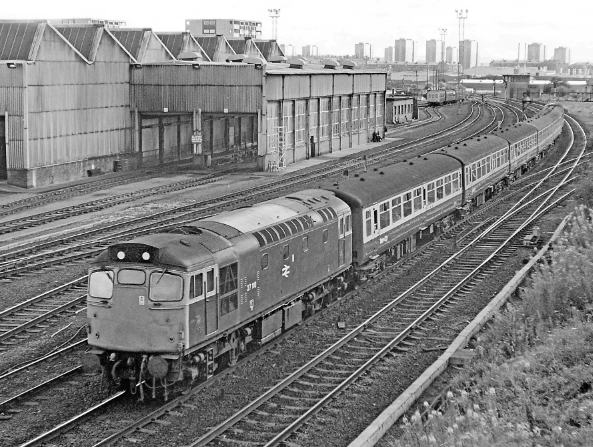
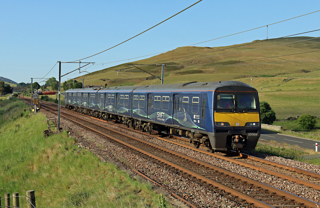
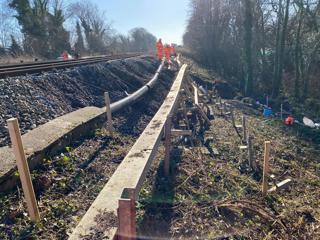
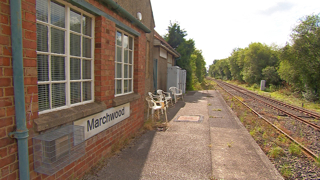
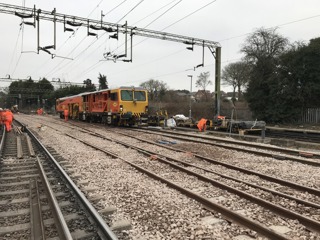
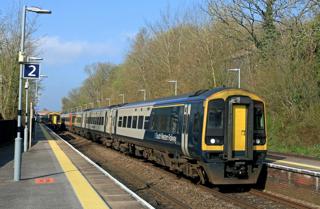












B Reid - 15/02/2018 19:40
Just as a side-note the BR ScotRail 47/7s were not fitted with TDM as is a common error, the two-wire Brush push-pull system was a FDM or Frequency Division Multiplex system of a rather cruder, simpler nature than the later standard TDM system.